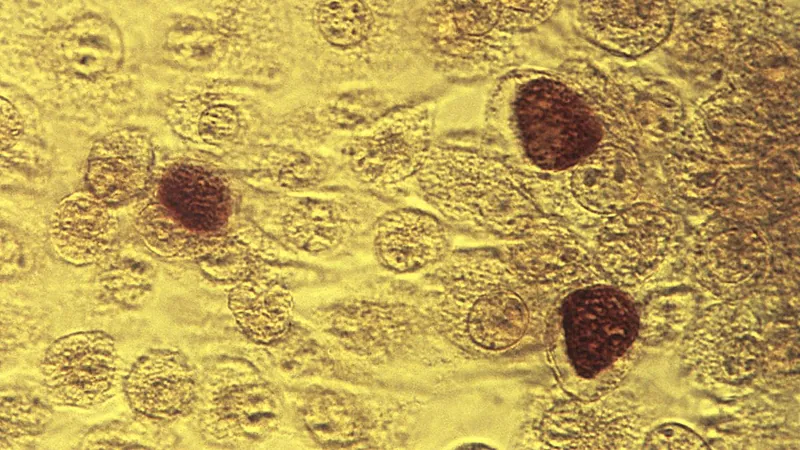
The STD Epidemic in the US Shows Signs of Recovery—What's Behind the Drop in Cases?
2024-11-13
Author: Yu
Overview
In recent years, the United States faced a troubling rise in sexually transmitted diseases (STDs), largely attributed to decreased condom use, insufficient sex education, and a significant drop in testing and treatment efforts during the COVID-19 pandemic. However, there is promising news on the horizon as recent reports indicate a slowdown in the epidemic with falling cases of syphilis and gonorrhoea.
According to the Centers for Disease Control and Prevention (CDC), cases of early-stage syphilis dropped by 10% last year, marking the first notable decrease in over 20 years. Similarly, gonorrhoea cases fell by 7%, continuing a downward trend for the second consecutive year, and dropping below numbers recorded in 2019. “I’m encouraged, and it’s been a long time since I felt that way,” mentioned Dr. Jonathan Mermin from the CDC, adding that “something is working.”
Last year, over 2.4 million cases of syphilis, gonorrhoea, and chlamydia were reported in the US: 1.6 million cases of chlamydia, 600,000 of gonorrhoea, and more than 209,000 of syphilis.
A Closer Look at Syphilis
Syphilis was nearly eradicated in the US following the introduction of antibiotics in the 1940s, but by the early 2000s, the infection rates began to rise again, particularly among men who have sex with men (MSM). The latest statistics reveal a 13% decline in early-stage syphilis cases among gay and bisexual men, the first decrease reported in this demographic since the mid-2000s. However, there was a concerning 12% increase in later-stage or unknown cases of syphilis, which reflects infections that occurred years prior. Alarmingly, congenital syphilis, transmitted from infected mothers to newborns, reached nearly 4,000 cases, resulting in 279 stillbirths and infant deaths.
Factors That Contributed to the Decline
Experts attribute the positive trends to several key interventions. The rise in the use of doxycycline as a post-exposure prophylaxis for STDs has shown to be effective in reducing the risk of infections when taken within 72 hours of unprotected sex. The CDC began recommending this antibiotic in June, particularly for MSM and transgender women with recent diagnoses of STDs. Notably, some public health organizations had already been distributing this treatment in certain cities for a few years prior.
Moreover, it’s believed that the mpox outbreak in 2022, which predominantly affected gay and bisexual men, may have altered sexual behavior patterns, leading more individuals to seek testing and treatment concurrently.
Increased efforts from healthcare professionals in improving access to testing, performing contact tracing, and ensuring treatment connections have also played a crucial role in these declines.
The European Situation
In contrast, Europe is grappling with a concerning rise in STDs. Authorities there have warned about a "troubling surge" in infections, with gonorrhoea cases skyrocketing by 48%, syphilis by 34%, and chlamydia by 16% in 2022 compared to the prior year, according to the European Centre for Disease Prevention and Control (ECDC). Over 300,000 new STD infections are reported annually in the EU and the European Economic Area, raising urgent calls for governments to ramp up testing, treatment, and prevention strategies.
As the US sees signs of recovery amidst a once-worrisome epidemic, the experiences and data from both regions underscore the critical importance of effective public health interventions and ongoing education to continue combating STDs effectively.



 Brasil (PT)
Brasil (PT)
 Canada (EN)
Canada (EN)
 Chile (ES)
Chile (ES)
 Česko (CS)
Česko (CS)
 대한민국 (KO)
대한민국 (KO)
 España (ES)
España (ES)
 France (FR)
France (FR)
 Hong Kong (EN)
Hong Kong (EN)
 Italia (IT)
Italia (IT)
 日本 (JA)
日本 (JA)
 Magyarország (HU)
Magyarország (HU)
 Norge (NO)
Norge (NO)
 Polska (PL)
Polska (PL)
 Schweiz (DE)
Schweiz (DE)
 Singapore (EN)
Singapore (EN)
 Sverige (SV)
Sverige (SV)
 Suomi (FI)
Suomi (FI)
 Türkiye (TR)
Türkiye (TR)
 الإمارات العربية المتحدة (AR)
الإمارات العربية المتحدة (AR)